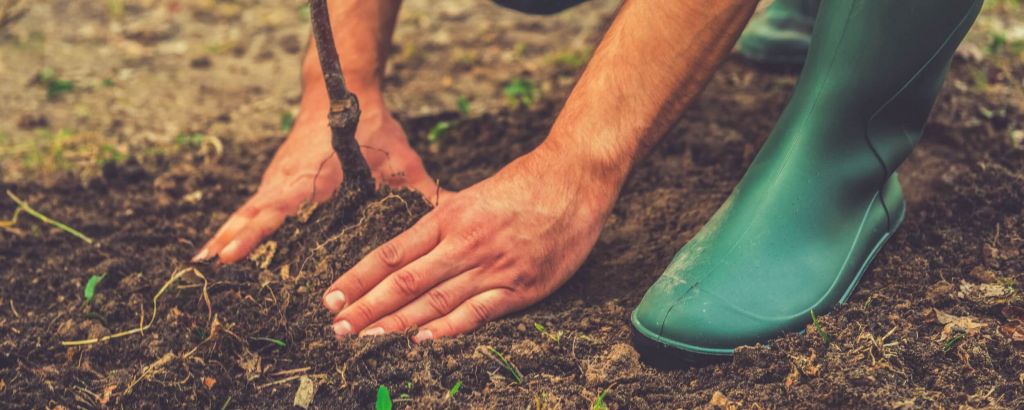Your garden in April

As we enter April, everything starts to feel a bit more hopeful. The days are longer, the world looks greener, and if we keep our fingers crossed, hopefully the sun will come out to play too.
With spring finally arriving, it’s time to get back out into the garden and start tackling the jobs you’ve been putting off. April is a great time to take stock of what needs to be done to get the garden back in shape after winter, but it’s also the time to look ahead. Time spent wisely in the garden now will reap the benefits in months to come, and ensure you have a glorious garden over the summer months and beyond.
But, where to start? If you’re looking hopelessly at the weeds and overgrown beds wondering how on earth to turn your outdoor space into an oasis, then we’ve got some handy tips to help you get the most out of your garden this April.
Repair your lawn
If the winter’s left your grass looking a little lacklustre, then April is a great time to work on repairing it so it’ll soon be back to its verdant self. For any patchy areas, sow grass seeds now. Prepare the lawn by removing weeds and scarifying the soil to loosen it. Then, use a lawn feed to help promote grass growth. Once you’ve done this, it’s time to plant. Mow the grass, then moisten the soil and sprinkle the grass seed evenly. (You should aim for about 35g per square metre, however, for patchier areas you can apply 50g per square metre). Water your lawn after reseeding, and continue to mow as normal.
Tackle the weeds
It’s a gardening job nobody enjoys, but an essential one nonetheless, especially if you want to give your garden a fighting chance of blooming this year. Around this time of year, you’ll start to see dandelions springing up in your lawn, so it’s a good idea to tackle these now to avoid them taking over. The same goes for those pesky weeds that are in your borders and beds - left to their own devices, they’ll take over and hamper the chances of your budding plants flourishing, so pull them up now (make sure to get the root too).
Grow your greens
If you’ve been longing for your own supply of vegetables, then now’s the time to plant them up and make that dream a reality. If you’re growing summer vegetables from seed, then you’ll need to harden them off first, by gently introducing them to the outdoors and to sunlight. Try leaving them outside for short bursts of time, and eventually you can increase this to allow them to be outside day and night.
Let it sow
Now’s a great time to sow seeds, especially if you’re looking for some colour in the garden this summer. Direct sow wildflower mixes - they’re ideal for attracting bees and butterflies, and will give the garden a lovely variety of colours too. It’s also the time to sow hardy annuals (poppies, sunflowers and marigolds). Before you sow, prep your soil to make sure it’s well-conditioned and providing the best nutrients to your seeds.
Plant out sweet peas
If you sowed sweet pea seeds in autumn, then the likelihood is they’ll be ready to plant in the ground this month. You’ll need to be sure the last frost has passed, and that you’ve hardened the seedlings by introducing them to the outside, bit by bit for a couple of weeks before you plan to plant them. Once they’re good to go, choose a spot in full sun where they’ll thrive, and plant them about 20cm apart.
Set your sights on summer
Take advantage of the soil beginning to warm up, by planting some summer flowering bulbs this month. Gladioli, Cannas and Alliums can all be planted directly into the ground, and will make for an impressive display come summer. Group the bulbs together with at least six for maximum impact.
Back to the roots
April is the ideal month to plant trees and shrubs in the garden - planting in spring gives them a chance to grow and flourish during the summer months, and they’ll be better prepared for winter. If there’s any trees or shrubs that need a little relocation, now’s the time to consider doing this, too. Choose a cooler day to avoid the roots drying out, and be aware that it may take a little time for your plant to adjust to its new surroundings. Much like us, moving can be stressful, and plants can experience shock. Ensure that the soil is well watered before moving the plant, and afterwards continue to water thoroughly. It’s also a good idea to lay down a thick mulch of compost or bark to help conserve moisture.
Charlie Bond - Gardenscape's Constant Gardener
